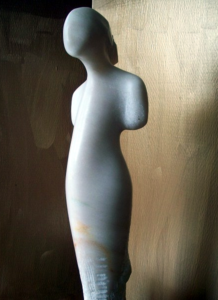Variation of Stimulation Intensity and Neural REgulation in Mirror Image pain
Kristen Sparrow • September 20, 2014

This article looks at two levels of manual stimulation on GB 30 in rats with in a neuropathic pain model. They find no difference to the control in mild stimulation, but they do see an up regulation in the strong stimulation group.
[Effect of mild and strong manual acupuncture stimulation of “Huantiao” (GB 30) on mechanical pain thresholds and extracellular signal-regulated kinase protein expression in spinal dorsal horns in rats with neuropathic mirror-image pain].
Abstract
OBJECTIVE:
To observe the effect of different intensities of manual acupuncture (MA) stimulation on mechanical pain thresholds (PTs) and the expression of phosphorylated extracellular signal-regulated kinases (p-ERK) in lumbar spinal dorsal horn regions in rats with neuropathic mirror-image pain, so as to explore its mechanisms underlying analgesia.
METHODS:
Forty male SD rats were equally and randomly divided into control, spinal nerve ligation (SNL) model, mild MA-stimulation, and strong MA-stimulation groups. Neuropathological pain model was established by ligature of the spinal nerve (L 5). Three days after the SNL, bilateral “Huantiao” (GB 30) were stimulated by rotating the thin (0.22 mm x 13 mm) or thick (0.3 mm x 13 mm) filiform needles at a frequencies of 60 times/min or 180 times/min and at an angle of 180 degrees or 360 degrees for 2 min for rats in the mild and strong MA-stimulation groups, respectively, followed by remaining the needle in place for 30 min. The mechanical PTs were measured before and after SNL. The expression of p-ERK protein in bilateral dorsal horn regions of the lumbar spinal cord (L4- L 6) was detected by Western blot.
RESULTS:
In comparison with the control group, the mechanical PTs were significantly decreased beginning from the 3rd day on after SNL on the affected side and from the 7th day on after SNL on the healthy hindpaw (P < 0.05), simultaneously, p-ERK protein expression levels of dorsal horn regions on both sides of the spinal cord were considerably up-regulated on the 12th day (P < 0.05). Compared with the model group, the PTs of the affected hindpaw and the healthy hindpaw were significantly increased on the 7th and 12th day in the strong MA-stimulation group (P < 0.05, P < 0.01), whereas pERK expression levels in the bilateral spinal dorsal horn regions were obviously down-regulated in the strong MA-stimulation group (P < 0.05). No significant differences were found between the model and mild MA-stimulation groups in the PTs of bilateral hindpaws and p-ERK expression levels of the bilateral spinal dorsal horn regions (P > 0.05) except the PTs of the healthy hindpaw on 7th day (P < 0.05).
CONCLUSION:
Strong MA-stimulation can alleviate neuropathic mirror-image pain in SNL rats, which is closely related to its effect in down-regulating the expression of p-ERK in the bilateral spinal dorsal horn regions.


